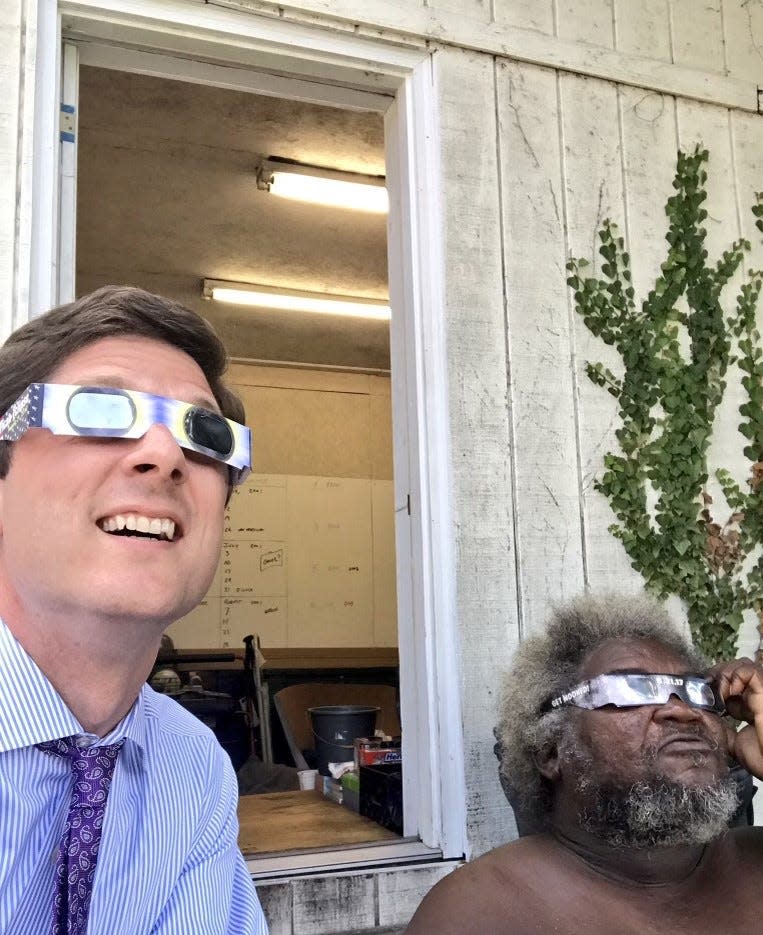School children, Maury citizens turn eyes to the skies for solar eclipse

Eyes will turn to the sky for a moment on April 8 as a total solar eclipse passes in partial view in a trajectory across the U.S., Mexico and Canada.
Hopes are high that possible rain showers hold off, as precipitation is possible for 40% of the viewing area, according to the latest forecast by National Weather Service.
Monday’s total solar eclipse event will cause many to bring their day to a halt just after lunchtime in the Middle Tennessee area as spectators step outside to witness the event.
According to an interactive map created by NASA and published by The Tennessean, Columbia is predicted to have decent coverage witnessing 93% of the path of totality.
More: When is the next total solar eclipse in the US after 2024? Here's what you need to know.
The map shows Columbia’s viewing to begin at 12:43:40 p.m., when the sun will be majorly obscured from view for just shy of three hours.
The peak time or maximum coverage period listed for Columbia’s viewing is until 2:02:30 p.m.
No matter where you are though, there is plenty of information available cautioning participant viewers to protect their eyes with ISO-certified eyewear.
According to information from the website, www.eclipse2024.org precautions watchers to avoid eye injury to stave off a condition called solar retinopathy, in which permanent eye damage is possible from viewing direct sun rays and failing to use protective glasses.
The universal website also gives information specific to each community, including Columbia, for the day of the eclipse.
Across the district, Maury County Public Schools are prepared and will be letting students get a safe glimpse at the rare solar event.
Schools will provide glasses for the event, making it an educational opportunity.
MCPS Communications Director Jack Cobb said teachers distributed permission slips for parents to allow students to experience the eclipse.
“Each school is hosting their own event,” Cobb said. “And we are thrilled at the chance to share this historic moment with our students.”
Monday’s historic moment does call to mind a similar eclipse that was visible in 2017.
However, this second eclipse in a series forecasted for the 21st century will outshine the previous eclipse in that it will cover a much larger swath of the globe, covering three continents.
Nashville was uniquely situated for one of the best views seven years ago, and is well placed for another great viewing this time.
According to information provided by the official eclipse website, the duration of totality will be longer than the previous event and appear a bit larger in the sky due to the moon’s closer proximity to the earth, this time around.
The only possible interruption of the fun could be cloud cover as the NASA interactive map predicts only a 46% chance of clear-sky viewing.
The eclipse is expected to end completely by 3:19:30 p.m.
More solar blackouts are coming, but the wait will be a bit longer next time. The next total solar eclipse is not expected until March 30, 2033, while the next total solar eclipse to be seen from the contiguous United States will be on Aug. 23, 2044.
Dave Campbell is a freelance writer in Middle Tennessee.
This article originally appeared on The Daily Herald: Maury school children turn eyes to the skies for solar eclipse
